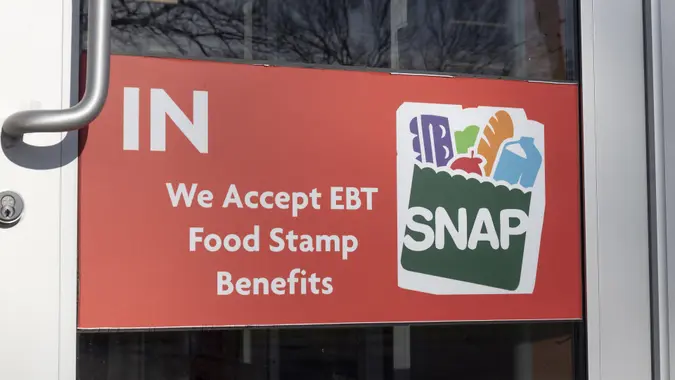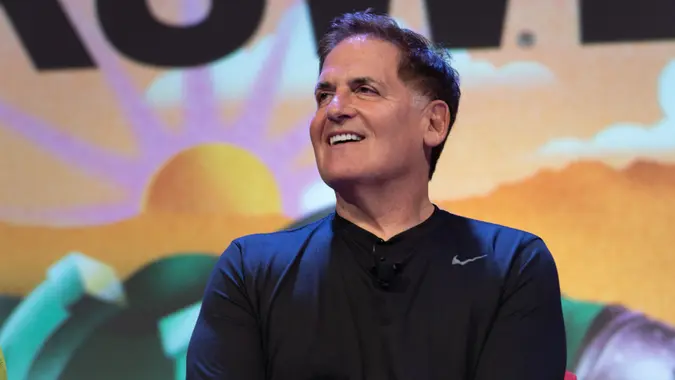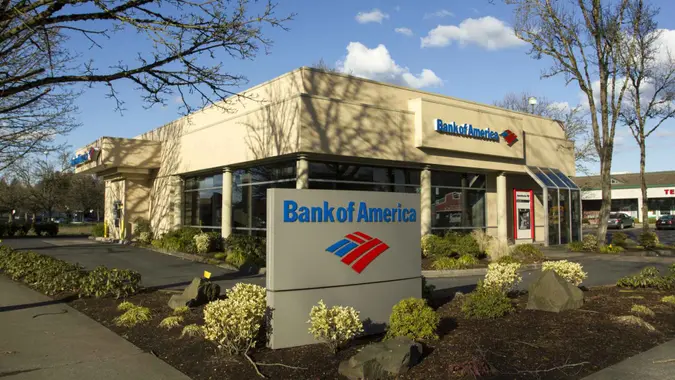Experts Give Inflation Predictions for the Rest of 2025

Commitment to Our Readers
GOBankingRates' editorial team is committed to bringing you unbiased reviews and information. We use data-driven methodologies to evaluate financial products and services - our reviews and ratings are not influenced by advertisers. You can read more about our editorial guidelines and our products and services review methodology.

20 Years
Helping You Live Richer

Reviewed
by Experts

Trusted by
Millions of Readers
In the United States, the subject of inflation is always the first eyebrow raised when it comes to times of economic unpredictability. Though the current inflation rate hovers around 2.3% and is relatively reasonable when compared to a few years ago, that doesn’t mean consumers should get too comfortable with stability.
With President Trump and his White House administration putting tariffs into effect, some economists are forecasting inflation to rise slightly in the latter half of 2025. Keep in mind, this is a complex subject, and it takes a multilayered understanding of interest rates, labor markets, personal consumption expenditures and general economic conditions to really grasp just what inflation expectations to have.
So, to help make the matter more digestible, GOBankingRates consulted experts to weigh in with bite-sized insights on the future of inflation.
Perspective on the Current Status of Inflation
To gain insight into where inflation data may be headed, it’s useful to understand the current stance of American consumers and the Federal Reserve Bank’s inflation target.
According to Ed Mahaffy, certified financial planner (CFP), president and senior portfolio manager at ClientFirst Wealth Management, inflation has fallen dramatically from its previous high of over 9% to its current stance of 2.8%.
“The CPI over-weights the price of housing, more than any other developed nation by a long shot, comprising over 30% of the index,” Mahaffy said. “Even if the CPI falls from here by another point or so, do not expect your cost of living to fall in tandem.”
Trump’s Tariffs and Global Trade Agenda
The Trump administration has taken some big swings when it comes to global trade and levying tariffs on imported goods. Many analysts say there could be a direct correlation between these mandates and higher prices for consumers and businesses alike. Because of this, for example, economists from Morgan Stanley Research expect inflation to rise to 2.5% (excluding food and energy costs, which are predicted to reach 2.7%).
The Housing Market Could Remain Impossibly Tight
The sector that may be the most difficult to recover from high inflation is housing.
“It is likely we will see incremental gains on the inflation target from other sectors, but with housing still in tight supply and building starts being low this year, the shelter cost component faces headwinds,” said Dave Koch, managing director of advisory services at Abrigo.
“Lower mortgage rates should entice more buying, but without more affordable supply, there is little room for relief.”
Taking Down Inflation Is a Long Process
Though the Fed’s efforts to lower inflation have been mostly successful, inflation is a difficult beast to tame, and it doesn’t die down without a long fight.
“Inflation doesn’t just disappear overnight,” said Joseph Camberato, CEO at National Business Capital. “The Fed has done a solid job slowing down inflation after the Covid stimulus money shook the economy, but that doesn’t mean it’s gone or will keep dropping without some ups and downs.”
There’s Some Reason for Optimism
Though the Fed’s goal for the annual inflation rate to hit 2% may not be realized, where we are now with inflation is actually not bad.
“There’s been real progress since June 2022,” Camberato said. “Inflation will stay a little above 2% for now, in my opinion), and at some point, we might hit that target. But realistically, inflation tends to hover around 3%, and that’s a normal range.
“What’s key here is the Fed’s decision to start lowering rates,” Camberato said. “That shows it feels good about the progress so far, and that the economy is strong enough to bounce back. As the Fed pumps more money into the system, we might see some small bumps, but I’m confident the days of really high inflation are behind us for a while.”
Nick Brown, head of economic insights at Prevedere, also suggested there’s reason for optimism – but we’ll need to be patient.
“Overall, we anticipate inflation to continue down a steady path toward the Federal Reserve’s target… and hover around the 2% range through the beginning of 2026,” Brown said.
“We expect shelter rates to slow but remain slightly elevated due to short supply and increased activity in housing as mortgage rates begin to decline, but continued disinflation across core commodities and new and used vehicles will help push us toward the 2% target in 2025.”
Caitlyn Moorhead contributed to the reporting for this article.
More From GOBankingRates
 Written by
Written by  Edited by
Edited by 

























